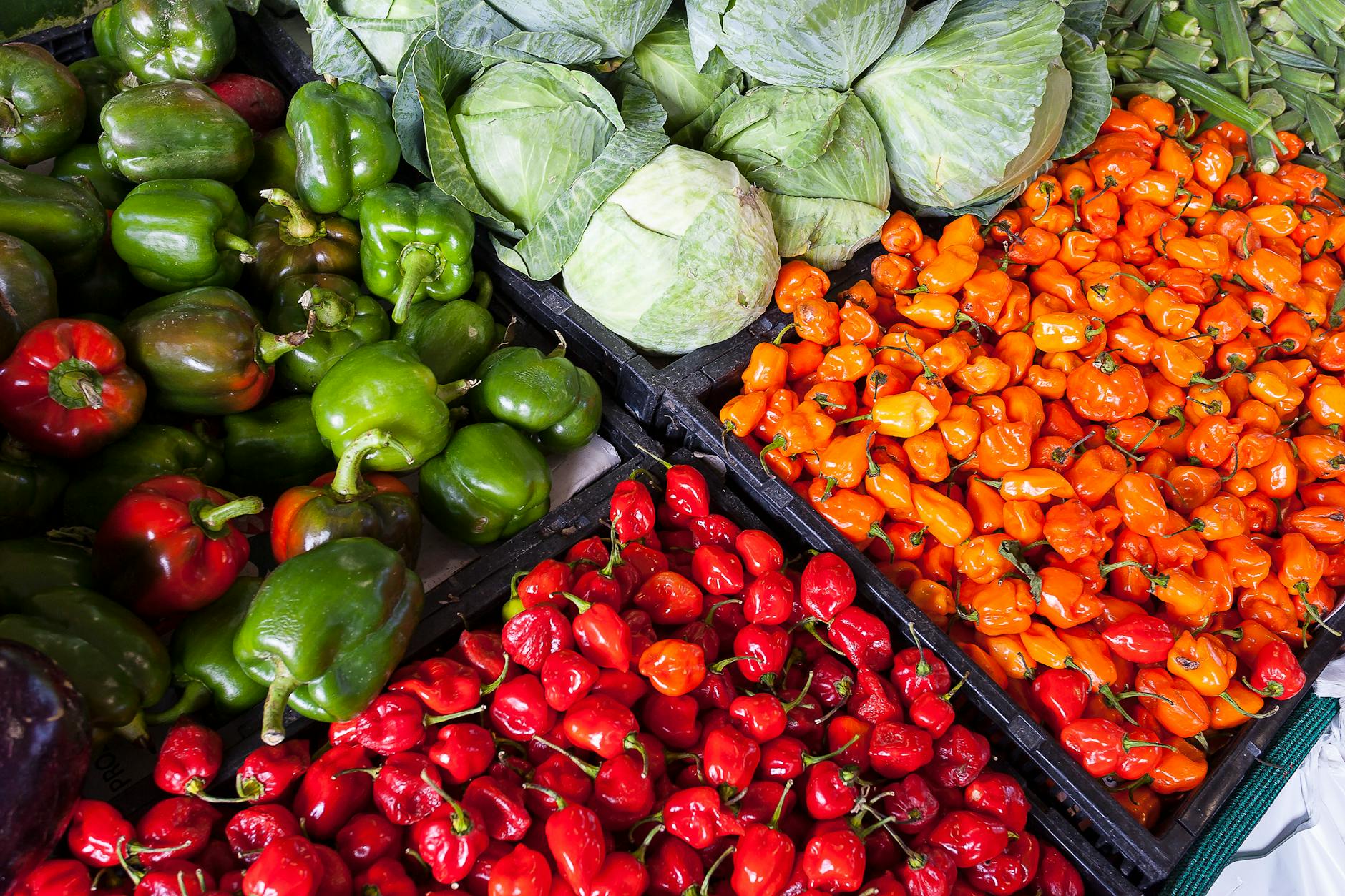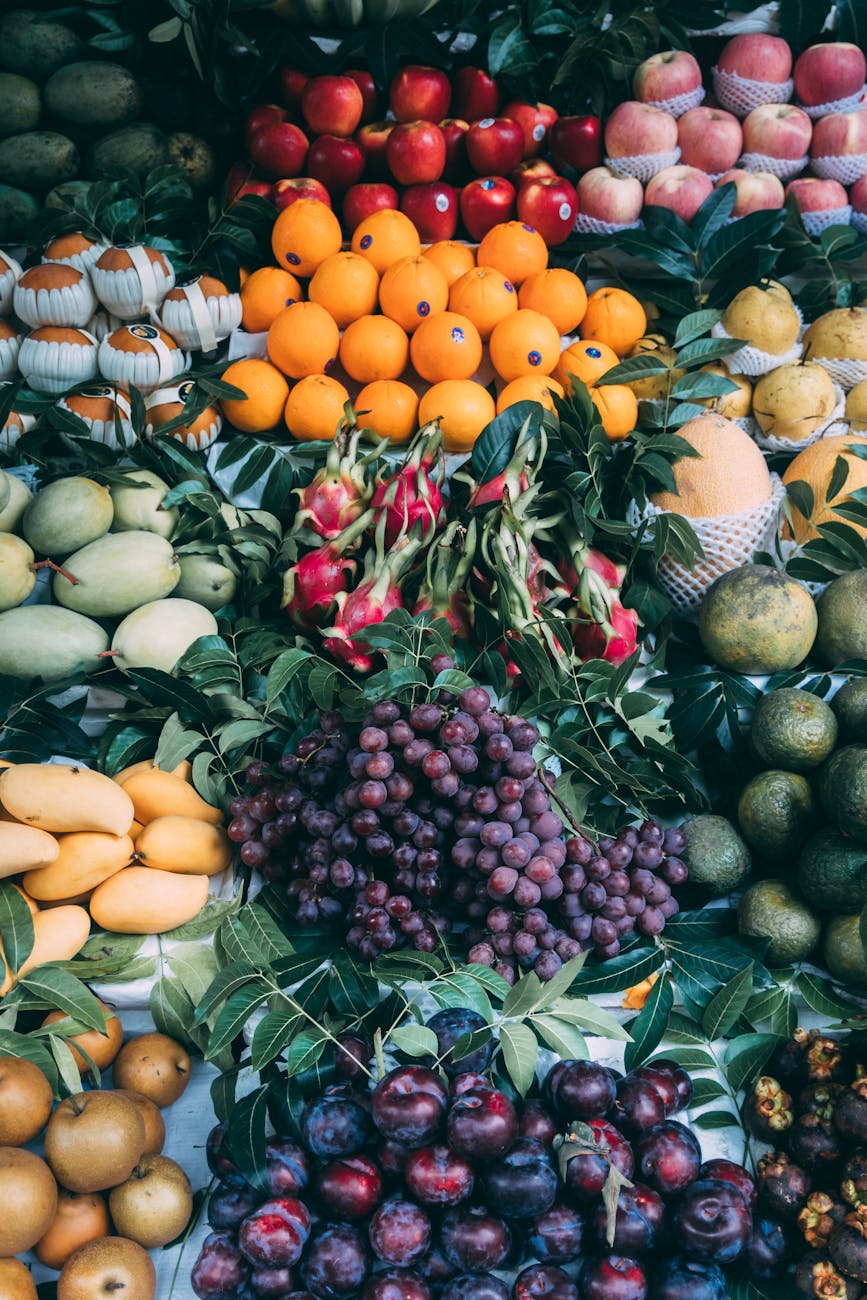How to Eat Seasonally for a More Sustainable Life
Why Should We Focus on Eating Seasonally?
Eating seasonally is about embracing the natural rhythm of what grows around us. To focusing on fruits and vegetables when they’re at their peak of flavor, freshness, and nutritional value. By aligning our diet with the seasons, we are supporting our own health and contributing to a sustainable food system. When we prioritize what’s locally in season, we reduce the environmental impact of large food transport and support local farmers who work with nature’s cycles.

For me, seasonal eating has become an essential part of homesteading. I get excited for the first garden tomato; I dream about its freshness all winter long. My body craves the hearty foods of winter like acorn squash, beef roasts, and warming soups. Eating seasonally is a simple yet impactful way to connect with nature, honor the land, and enjoy foods as they were meant to be enjoyed.
Health Benefits of Eating Seasonally
One of the biggest perks of eating seasonally is that fruits and vegetables are at their peak nutritional value. When produce is allowed to ripen naturally, it’s often richer in vitamins, minerals, and antioxidants, giving you more nourishment from each bite. For instance, in-season berries and leafy greens are packed with antioxidants that support immune health, while winter squash provides hearty fiber and essential nutrients to keep us energized during colder months. No one likes to be rushed, especially food.

Eating seasonally also encourages a varied diet, which is great for overall health. Each season brings a unique mix of foods, which helps us get a wide range of nutrients throughout the year. This variety can positively impact gut health, as different types of produce introduce a broader spectrum of nutrients and fibers that promote a healthy microbiome. Plus, seasonal produce often tastes better because it’s fresher, so it’s easier to enjoy eating more fruits and vegetables.
When we align our diets with the seasons, we’re also honoring our body’s changing needs. Summer’s hydrating fruits and vegetables help keep us cool and refreshed, while fall and winter’s hearty, warming foods provide energy and comfort. This natural cycle of eating creates a nourishing balance that supports health year-round.
Sustainability and Environmental Impact
Eating seasonally isn’t just beneficial for our health; it also has a positive impact on the environment. When we choose locally grown, in-season produce, we’re reducing the environmental costs associated with transporting out-of-season foods over long distances. Imported fruits and vegetables require substantial energy for transportation, refrigeration, and packaging to keep them fresh during transit. By eating seasonally, we’re supporting a more sustainable food system with a smaller carbon footprint. And keeping land sacred for food production and not warehouses.

Choosing local, seasonal foods also helps support small, local farms that work with nature’s natural cycles, often using more eco-friendly practices than industrial farms. When farmers can grow and sell crops in season, they don’t need to rely on as many artificial means, like greenhouse heating or chemical inputs, to produce food out of season. Supporting these farms keeps our local food systems strong and resilient, fostering a sense of community and sustainability.
Seasonal eating also helps reduce food waste. When crops are in abundance, they’re typically more affordable and easier to access, encouraging us to buy what’s plentiful and enjoy it in its prime. This abundance can inspire us to preserve excess produce through methods like canning, freezing, or drying, so that we can savor seasonal flavors long after the harvest.
Aligning with Nature’s Cycles
Each season brings a distinct variety of foods that naturally align with what our bodies need at different times of the year. In the warmer months, we find an abundance of juicy, hydrating fruits like watermelon, cucumbers, and berries that help keep us cool and refreshed. As fall arrives, the harvest shifts to heartier vegetables like pumpkins, sweet potatoes, and squash, which offer the warmth, fiber, and nutrients that sustain us during cooler weather.

Eating seasonally encourages us to listen to nature’s rhythms and adapt our diets in ways that feel intuitive. Spring greens, for example, are light, fresh, and ideal for renewal after winter, while winter root vegetables, like carrots and potatoes, provide grounding energy and long-lasting sustenance. When we align with this natural cycle, we experience a balance that’s rooted in seasonal nourishment.
For those new to eating seasonally, it can be helpful to start by exploring what’s in season where you live. Farmers’ markets are great resources for finding local, seasonal produce and for connecting with growers who understand the land. As you begin to incorporate these foods into your diet, you’ll find that each season brings its own unique flavors, colors, and textures, offering an ever-changing palette of ingredients to enjoy.

Tips for Eating Seasonally on a Homestead
On a homestead, eating seasonally becomes a natural extension of the lifestyle. Growing your own produce gives you firsthand experience with the cycles of each crop, and preserving the harvest allows you to enjoy seasonal flavors year-round. Here are some practical ways to embrace seasonal eating on the homestead:
- Grow What’s in Season: Planting a variety of crops that thrive in each season ensures a steady supply of fresh produce. Spring might bring leafy greens, summer is perfect for tomatoes and peppers, fall offers root vegetables and squash, and winter can support hardy greens like kale in mild climates. Planning your garden around the seasons keeps you in sync with nature’s rhythm.
- Preserve the Harvest: Canning, freezing, and drying are excellent ways to capture the flavors of each season. In summer, try making jams, pickles, or frozen fruit preserves. In fall, consider canning applesauce or drying herbs for winter use. By preserving foods at their peak, you can enjoy the essence of each season long after the harvest.
- Get Creative with Seasonal Recipes: Eating seasonally doesn’t have to mean eating the same dishes over and over. Experiment with seasonal ingredients in different recipes, such as soups, stews, salads, and one-pan meals. Cooking with what’s fresh inspires creativity and makes each season feel new.
- Explore Local Farmers’ Markets: Even if you can’t grow everything, farmers’ markets are a great way to supplement your pantry with local, in-season produce. Connecting with local growers also offers insight into what grows best in your area and can introduce you to new foods you might not have tried.
Eating seasonally on the homestead brings variety and nourishment to your meals and supports a lifestyle that values sustainability, creativity, and connection to the land. It’s a wonderful way to make the most of each season and enjoy foods at their freshest.
A Sustainable, Nourishing Choice
Eating seasonally is more than just a dietary choice—it’s a way to align with nature, support sustainability, and bring a richer variety of flavors and nutrients to our lives. By choosing foods that grow naturally in each season, we not only nurture our bodies but also make mindful, eco-friendly choices that reduce our impact on the planet. Seasonal eating reminds us to slow down, savor each harvest, and enjoy the natural rhythms of the year.
On the homestead, seasonal eating becomes a way of life. With each crop we grow, each jar we preserve, and each meal we prepare, we honor the land and its cycles. Embracing this approach can bring a sense of fulfillment and connection to the world around us, reminding us that true nourishment comes from what’s fresh, simple, and rooted in the seasons.
Other posts you may enjoy: Herbal & Medicinal Gardening
Resources to help your get started:
- In Season by Robin Raisfeld and Rob Patronite
- The Farmers Market Cookbook by Brett Groshgal and Julia Shanks
- Eating Culture by Gillian Crowther